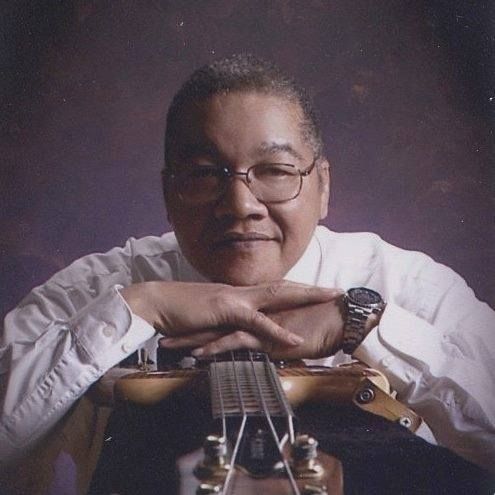This is truly sad news. He was the artist for Icon, who, despite being a conservative in his first incarnation, was perhaps my favorite Milestone superhero!
Here are some obits and here is his Wiki.





This is truly sad news. He was the artist for Icon, who, despite being a conservative in his first incarnation, was perhaps my favorite Milestone superhero!
Here are some obits and here is his Wiki.





…..Saturday mornings on ABC became appointment television for millions of 1970s children across America. (All this and Scooby-Doo and Schoolhouse Rock, too!)
Oh, an important societal note:
If you want to see a 1973 future-forecast prediction of Amazon.com, streaming services allowing people to stay home, etc., please find and watch all of the first-season episode “Professor Goodfellow’s G.E.E.C.” Two small excerpts:

The magic word is….uneven
It’s unfortunate that the tension between 1990s superhero-film cheesiness and 2022 superhero-film coolness makes this effort implode. A post-COP27 viewing allowed more sensitivity to how Egyptians oppress themselves with the West’s help. Too bad the film quickly traded in that theme for a third-act battle with a Hellboy knockoff and some fake AMC Walkers. God bless his soul, Pierce Brosnan, 30 years distant from the start of his ’90s James Bond, elevated Black Adam when he could (with fine assists from Aldis Hodge) but couldn’t save it. It’s not hard to see why few wanted a piece of this Rock.

Fighting The Power, for-real-for-real this time
Reginald Hudlin’s writing style remains blatant and strident by half. But as a former full-set Icon/Static/Hardware Milestone Comics collector (sadly, lost them in a move 😦 ), I must admit I much prefer his style to the comparatively accommodationist Milestone founder Dwayne McDuffie!
Six issues in and you win, Mr. Hudlin: the 19th-century enslaved Arnus as a Nat Turner (!) character and present-day free Augustus with a fine-ass sista amazon at his side and an assassin to hunt is much more appealing. And he had the assassin, an alien hired by the U.S. government to kill other aliens, kill a certain white infant recently adopted in 1939 by a white Kansas farm couple!
I doubt this version of Icon will be Clarence Thomas’ favorite! LMAO!!!! I’m in for the entire hardcover run! Thanks to DC/Milestone for bringing back my non-Wakandan superhero comic favorites!

#supermanandlois #superman&lois
Lana (finding out that Clark is Superman and talking about how he took his sweet time coming back to Smallville after he abandoned her to find his way to the cape): Did you ever love me?
Clark: Oh, Lana, of course I did.
Lana: (PAUSE) Just not enough.
I was determined to hate this show when it premiered and initially I was successful. A Superman TV narrative without Metropolis, The Daily Planet, etc.? A re-tread of Smallville? Superman with a brother? No. This ain’t the Thor movies.
But almost two full seasons in and after me pretty much memorizing Season 1, it’s clear this is the best Superman TV show ever. And that’s not easy, since there’s 70 years’ worth of truth-justice-American-way-TV to evaluate (including the very-good, just canceled homage show Naomi). The message of this well-written, well-photographed show–if you don’t take care of your family, every part of it, and do the hard work of sustaining that care every day, your family and you will fall apart–is clearly articulated by its expert use of nearly 100 years of Superman lore.
Lana will heal because she’s not jealous of Lois; she has her own beautiful and loving family to fix. And that’s the point of this show. Everyone’s busy keeping their family foundation solid. It be hard.
The best compliment I can give this show is that the only Marvel TV shows I ever put on loop are Disney+’s WandaVision followed by Daredevil. So for the CW’s Superman and Lois, a proud and strong DC product, to join that ranking is fantastic.

One out of every 10 classic superhero graphic novels I own is done by him. A life of extraordinary achievement by a man who, from all public accounts, was a nice, kind person.



The show’s first season begins with the death of a mother and ends with the burial of a father, with the middle filled in with what family members create. A very radical combo of Man of Steel, Smallville and Lois and Clark merges with the last 30 years of Superman comics into a meditation on the sustaining of the family unit from primarily two sources–the Kents and the Cushings (Lana Lang’s brood). The finale teaser for Season 2 shows the reconstitution of a third as a result of, appropriately, a rocket landing at the Kent farm. The CW-ish, almost-emerging-adult inside shows that the family dynamics have just begun to shift, with Lois being given one hell of a personal retcon of sorts and the boys gaining a sister (pun intended). Having Superman go to a mental-emotional space where he has to prioritize the world most important to him at the moment will continue to make him not only relevant, but even a more permanent part of American folklore.

Put The Guardians of the Galaxy in your head. Now, make a film star-ring them in your mind but make it as violent, as gory, as possible. But also make it as funny, if not funnier. There ya go.